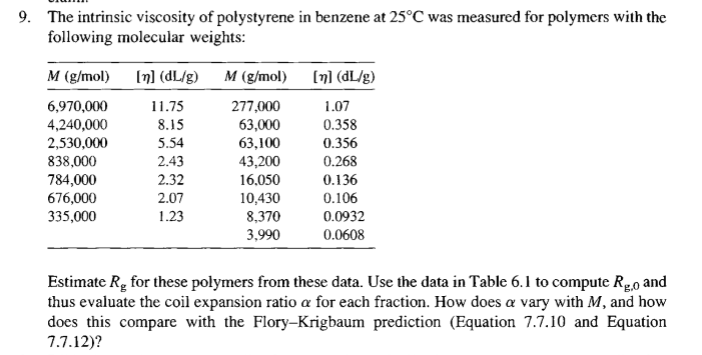

They found that degradation arises only from 1,2-glycol structures, and the increase in the number of molecules is a result of the degradation and that then provides a measurement of the percentage of head-to-head structures.

TheoryThe experiment that was performed was derived from Flory’s and Leutner’s experiment “Occurrence of Head-to-Head Arrangements of Structural Units in Polyvinyl Alcohol. It is a negative value because the cleaved PVOH has a higher molecular weight than the uncleaved. It was found that the average value of head-to-head linkages, Δ, was -0. The head-to-head chain linkage was determined as the difference between the molecular weights of the cleaved and uncleaved polymer multiplied by the molecular weight of polyvinyl alcohol. c for both the cleaved and uncleaved polymer were prepared and the intrinsic viscosity, η, was obtained by extrapolating linearly when concentration was equal to zero via a linear least squares regression. This will be done by using a water calibrated Ostwald viscometer held at a constant temperature.

The aim of this experiment is to calculate the viscosities of cleaved and uncleaved PVOH solutions, and to calculate the fraction of head-to-head linkages in the polymer. PVOH is soluble in water, which is unusual for synthetic polymers, but this allows PVOH to be used in a lot of commercial applications such as thickening and foaming agents. In comparing with the experimental data compilation of Rai and Rosen, we conclude that real polymer systems are nowhere near the true good solvent limit, even when the exponent matches the good solvent prediction. When the predictions are fit to a power law over a fixed range of chain length, a relation between the exponent and prefactor of the Mark-Houwink-Sakurada equation emerges. In comparing with the experimental data compilation of Rai and Rosen, we conclude that real polymer systems are nowhere near the true good solvent limit, even when the exponent matches the good solvent prediction.ĪB - The scaling predictions for the temperature dependence of the intrinsic viscosity of flexible polymers are briefly reviewed. N2 - The scaling predictions for the temperature dependence of the intrinsic viscosity of flexible polymers are briefly reviewed. T1 - Scaling analysis of the temperature dependence of intrinsic viscosity


 0 kommentar(er)
0 kommentar(er)
